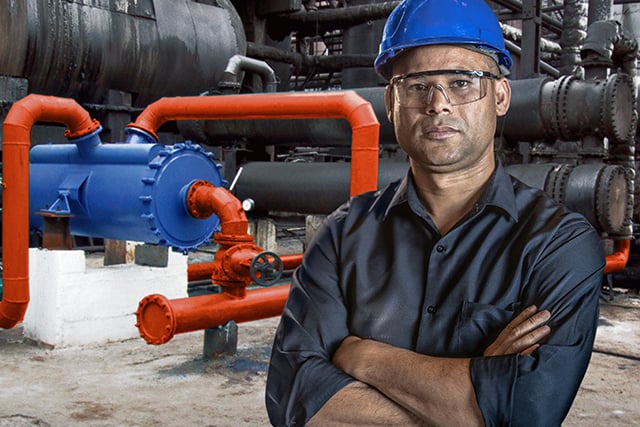Q&As about spiral heat exchangers
Q: What is a spiral heat exchanger?
A: A spiral heat exchanger is made up of two separate, fully welded, concentric channels for the hot and cold flows. A spiral heat exchanger is highly compact and the ideal choice for very fouling applications.
Q: What is the self-cleaning effect in a spiral heat exchanger?
A: The single-channel geometry of a spiral heat exchanger means the cross-section of a channel is reduced if fouling starts to build up in it. This causes the local pressure and flow velocity to increase since the entire flow must pass through a narrower channel, and eventually the force of the fluid flushes away the accumulated deposits. Alfa Laval refers to this as the SelfClean™ design.
See how spiral heat exchangers work
Q: How to prevent fouling in a spiral heat exchanger?
A: The single-channel design gives a spiral heat exchanger a self-cleaning effect, which naturally prevents fouling and clogging, and makes it very suitable for sludges, emulsions, slurries, and fibre/particle-loaded liquids.
Q: How to clean a spiral heat exchanger?
A: A spiral heat exchanger can either be cleaned chemically or mechanically. By opening the covers of a spiral heat exchanger, the heat transfer surface is fully accessible for high-pressure waterjet cleaning.
Learn more about cleaning a spiral heat exchanger
Q: How much do spiral heat exchangers cost?
A: Spiral heat exchangers come in sizes from 1 m2 to 1,000 m2 and can be anything from off-the-shelf products to fully customized units in exotic materials, meaning prices vary largely. In any case, a spiral heat exchanger is a very competitive solution with a short payback time for fouling applications, considering the high uptime and low OPEX.
Q: What industries use spiral heat exchanger?
A: A spiral heat exchanger is suitable in all industries handling challenging fluids such as sludges, emulsions, slurries, fibre/particle-loaded liquids, viscous or very fouling fluids. Spiral heat exchangers are widely used in oil refining, pulp and paper, petrochemicals and chemicals production, vegetable oil refining, and waste-water treatment.
Read customer stories from various industries and applications
Q: What are the different types of spiral heat exchanger?
A: Spiral heat exchangers are generally classified into four types depending on their designs (channels, position of nozzles, fluid distribution inside the unit, etc.). Type 1 and 3 are liquid/liquid heat exchangers suitable for fouling duties (Alfa Laval SpiralPro). Type 2 and 4 are mainly used in condensing applications (Alfa Laval SpiralCond).

